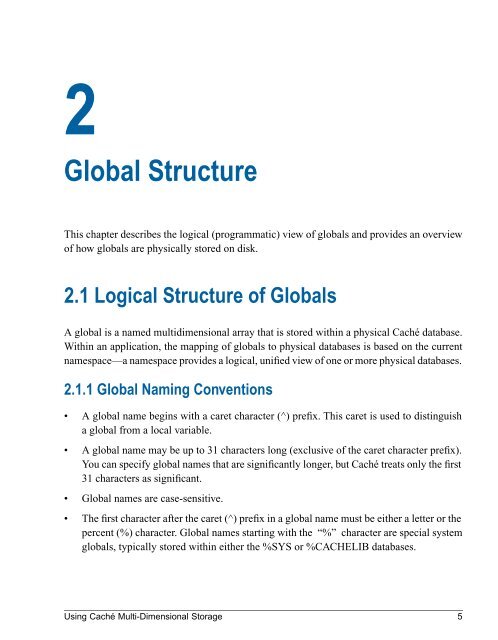Using Caché Multi-Dimensional Storage - InterSystems ...
Using Caché Multi-Dimensional Storage - InterSystems ...
Using Caché Multi-Dimensional Storage - InterSystems ...
Create successful ePaper yourself
Turn your PDF publications into a flip-book with our unique Google optimized e-Paper software.
2<br />
Global Structure<br />
This chapter describes the logical (programmatic) view of globals and provides an overview<br />
of how globals are physically stored on disk.<br />
2.1 Logical Structure of Globals<br />
A global is a named multidimensional array that is stored within a physical <strong>Caché</strong> database.<br />
Within an application, the mapping of globals to physical databases is based on the current<br />
namespace—a namespace provides a logical, unified view of one or more physical databases.<br />
2.1.1 Global Naming Conventions<br />
• A global name begins with a caret character (^) prefix. This caret is used to distinguish<br />
a global from a local variable.<br />
• A global name may be up to 31 characters long (exclusive of the caret character prefix).<br />
You can specify global names that are significantly longer, but <strong>Caché</strong> treats only the first<br />
31 characters as significant.<br />
• Global names are case-sensitive.<br />
• The first character after the caret (^) prefix in a global name must be either a letter or the<br />
percent (%) character. Global names starting with the “%” character are special system<br />
globals, typically stored within either the %SYS or %CACHELIB databases.<br />
<strong>Using</strong> <strong>Caché</strong> <strong>Multi</strong>-<strong>Dimensional</strong> <strong>Storage</strong> 5

















